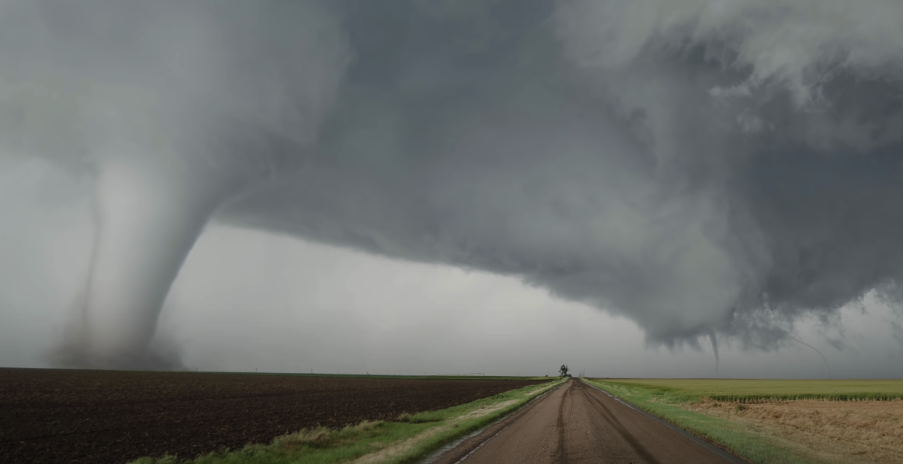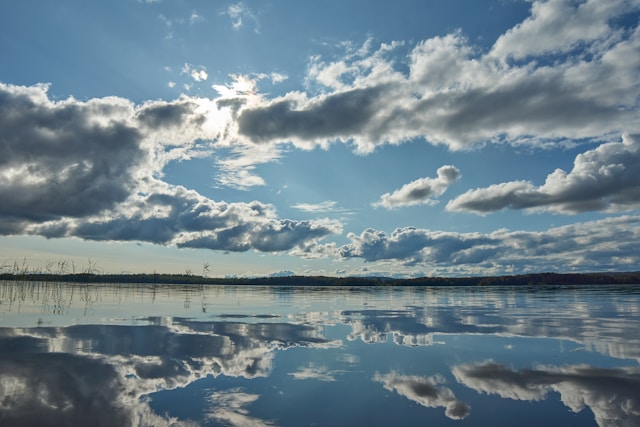Tornadoes are one of nature’s most violent storms, capable of causing significant destruction in a matter of seconds. These intense weather phenomena are characterized by their swirling, funnel-shaped wind patterns and are often associated with severe thunderstorms. While tornadoes can occur anywhere in the world, certain regions are more prone to them due to specific atmospheric conditions. This article will explore the top 10 countries where tornadoes are most frequently observed.
1. United States
The United States indisputably tops the list of countries with the most tornadoes. A significant contributor to the prevalence of tornadoes in the United States is its unique geography, particularly the Great Plains region, where dry polar air from Canada meets warm moist air from the Gulf of Mexico. This convergence of air masses often leads to severe weather conditions conducive to the formation of tornadoes.
Geographically, the central part of the United States, commonly known as “Tornado Alley,” is particularly prone to tornadoes. This area covers parts of Texas, Oklahoma, Kansas, Nebraska, and South Dakota. These states witness the majority of the country’s tornadoes, which tend to be more intense than those experienced in other countries.
Noteworthy Tornado Event:
The 2011 Joplin Tornado in Missouri, one of the deadliest tornadoes in U.S. history, resulted in 158 deaths and over $2.8 billion in damages. This EF5-rated tornado, the highest on the Enhanced Fujita scale, had peak winds estimated at over 200 mph.
2. Canada
Canada is the second most tornado-prone country. While tornadoes in Canada tend to be less potent than those in the United States, they can still cause substantial damage. Tornadoes in Canada typically occur in the southern regions of Alberta, Saskatchewan, and Manitoba, known as the Prairie Provinces, where flat landscapes allow cold air from the Arctic to meet warm, moist air from the Gulf of Mexico.
Noteworthy Tornado Event:
The Edmonton Tornado of 1987, often referred to as “Black Friday,” was an F4 tornado that resulted in 27 deaths and caused over C$332 million in damages. This event spurred changes in severe weather forecasting and warning systems in Canada.
3. United Kingdom
The United Kingdom is known for having the highest frequency of reported tornadoes per unit area globally. Contrary to popular belief, these tornadoes are not a recent phenomenon. Records of tornadoes in the UK date back to 1054. While most of these tornadoes are weaker than those experienced in the United States and Canada, they can still inflict considerable damage.
Noteworthy Tornado Event:
The Birmingham Tornado of 2005 was one of the strongest tornadoes recorded in the UK, rated as an F2. It caused significant damage in the city, with an estimated £40 million in losses, but no fatalities.
4. Australia
Australia witnesses a moderate number of tornadoes each year, predominantly in the southeastern states of New South Wales, Victoria, and South Australia. These tornadoes typically accompany severe thunderstorms and can result in considerable damage.
Noteworthy Tornado Event:
The Brisbane Tornado of 1973 was a significant event that resulted in 17 injuries and AUD$15 million in damage. This tornado, rated as an F3, was associated with a severe hailstorm that exacerbated the damage.
5. India
While India is not traditionally associated with tornadoes, its large geographical area and population make it a country where tornadoes can and do occur. The majority of tornadoes in India happen during the monsoon season, from June to September.
Noteworthy Tornado Event:
In 2019, the Bara-Parsa Tornado struck along the Nepal-India border. It was a rare and significant event, being the first officially recorded tornado in Nepal’s history, which also impacted northern regions of India.
6. Bangladesh
Despite its small size, Bangladesh is among the countries where tornadoes are relatively frequent. The country’s geographical location, combined with its climatic conditions—particularly during the monsoon season—make it susceptible to tornadoes.
Noteworthy Tornado Event:
The Daulatpur-Saturia Tornado of 1989 is considered one of the deadliest tornadoes globally. The death toll is estimated to be approximately 1,300, with thousands more injured. The tornado’s path was a mile wide and about 10 miles long.
7. Argentina
Argentina is no stranger to tornadoes, particularly in the Pampas region, where they usually coincide with severe thunderstorms. The Pampas, a vast plain extending across Argentina, Uruguay, and Brazil, creates an ideal environment for the formation of tornadoes.
Noteworthy Tornado Event:
The San Justo Tornado of 1973 was the most devastating tornado recorded in the Southern Hemisphere. Rated an F5 on the Fujita scale, it caused considerable damage and resulted in 63 deaths.
8. Russia
Due to its vast size, Russia records several tornadoes each year. However, low population density and the country’s vast wilderness imply many tornadoes likely go unreported.
Noteworthy Tornado Event:
The Ivanovo Tornado in 1984 was one of the deadliest tornadoes in European history, causing significant damage in Ivanovo and Balino, and resulting in approximately 400 deaths.
9. South Africa
Tornadoes in South Africa primarily occur in the eastern provinces during the summer months, coinciding with the country’s severe thunderstorm season.
Noteworthy Tornado Event:
The Mount Ayliff Tornado of 1998 resulted in significant damage in the Eastern Cape region. This tornado caused 18 fatalities and left over 500 people homeless.
10. Brazil
Brazil experiences sporadic tornado occurrences, particularly in the southern states of Santa Catarina and Rio Grande do Sul. The country’s diverse climate conditions occasionally lead to severe weather phenomena, including tornadoes.
Noteworthy Tornado Event:
The Xanxerê Tornado in 2015 was a significant event in Brazil’s recent history, rated as an F3 on the Fujita scale. The tornado resulted in significant damage in the town of Xanxerê, causing at least nine fatalities and leaving hundreds homeless.
Conclusion
While tornadoes can occur anywhere in the world, certain geographical and climatic factors contribute to their higher frequency in specific regions. The United States, especially Tornado Alley, leads in both the number and intensity of tornadoes, followed by countries like Canada, the United Kingdom, and Australia. Other nations such as India, Bangladesh, Argentina, Russia, South Africa, and Brazil also experience these powerful natural phenomena, albeit less frequently. Awareness of regional tornado susceptibility and having a sound understanding of safety measures during tornadoes are key to minimizing the potential devastating impacts of these fierce storms.
FAQs
Tornadoes are typically caused by severe thunderstorms. When warm, moist air collides with cold, dry air, it can cause the air to rotate. If this rotation is strong enough and conditions are right, a tornado can form.
Tornado Alley is a colloquial term for an area in the central United States that consistently experiences a high frequency of tornadoes each year. The core of Tornado Alley includes parts of Texas, Oklahoma, Kansas, Nebraska, and South Dakota.
Yes, while some areas are more prone to tornadoes due to geographical and climatic factors, tornadoes can occur anywhere in the world if the conditions are right.
If a tornado is imminent, seek shelter immediately, ideally in a basement or an interior room on the lowest floor of your building. Stay away from windows and cover yourself with a mattress or heavy blankets to protect against flying debris.
Meteorologists can predict conditions conducive to tornadoes, but predicting exactly when and where a tornado will touch down is still beyond current technology. However, tornado warning systems have significantly improved over the years, and they can often provide minutes to hours of advance warning.


